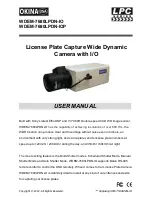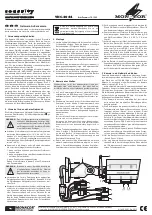
Spyder 3 GigE User Manual
03-032-10158-06
DALSA
74
Setting Digital Offset
Purpose:
Sets the digital offset. Digital offset is set to zero when you
perform FPN correction (
88H
ccf
command). If you are unable to
perform FPN correction, you can partially remove FPN by
adjusting the digital offset.
Syntax:
sdo t i
Syntax Elements:
t
Tap selection. Allowable range is
1
to
2
depending on
camera model, or
0
for all taps.
i
Subtracted offset value in a range from
0
to
2048
where
FPN Coefficient=
i
(12 bit LSB Justified)
Notes:
•
When subtracting a digital value from the digital video
signal, the output can no longer reach its maximum unless
you apply digital gain using the
89H
ssg
command. See the
previous section for details on the
90H
ssg
command.
Related Commands:
91H
ssg
Example:
sdo 0 100
PRNU Correction
Summary of Contents for spyder SG-10-01k40
Page 16: ...Spyder 3 GigE User Manual 03 032 10158 06 DALSA 16 ...
Page 30: ...Spyder 3 GigE User Manual 03 032 10158 06 DALSA 30 ...
Page 36: ...Spyder 3 GigE User Manual 03 032 10158 06 DALSA 36 ...
Page 42: ...Spyder 3 GigE User Manual 03 032 10158 06 DALSA 42 ...
Page 46: ...Spyder 3 GigE User Manual 03 032 10158 06 DALSA 46 ...
Page 114: ...Spyder 3 GigE User Manual 03 032 10158 06 DALSA 114 ...
















































